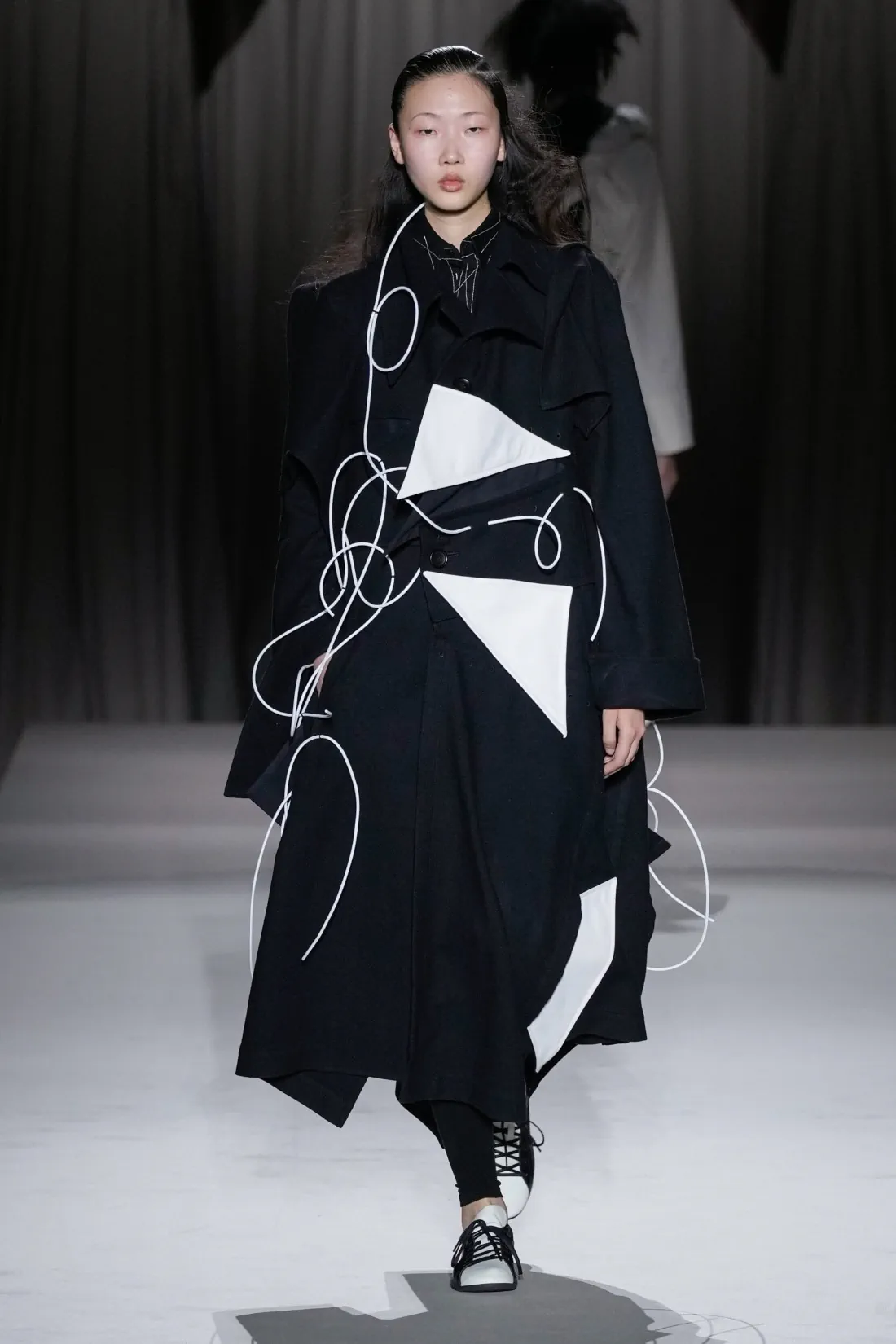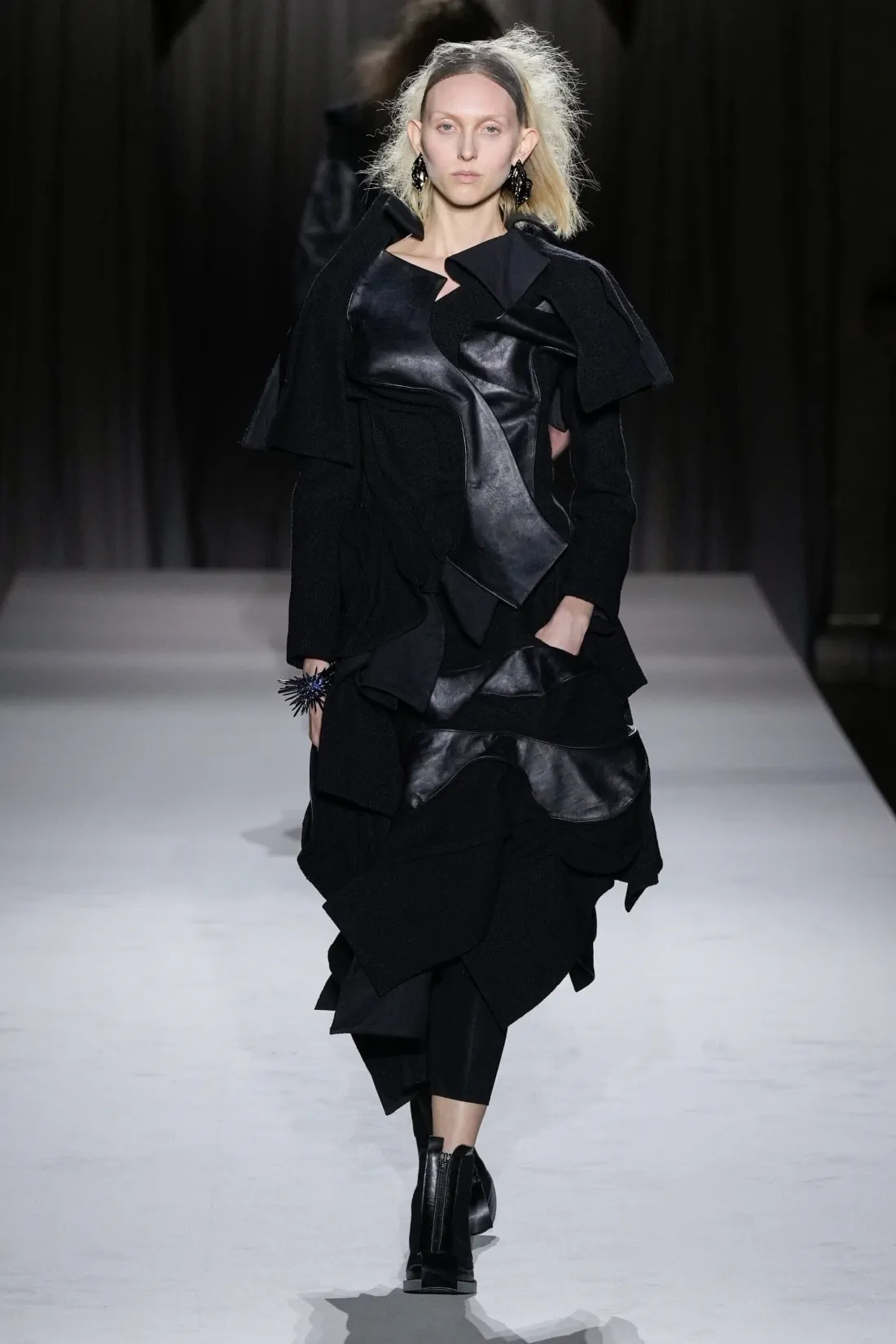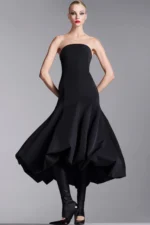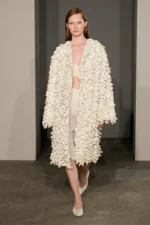Yohji Yamamoto’s Fall/Winter 2025 collection transforms winter’s chill into a meditation on texture, adaptability, and the quiet power of hidden layers. At 81, the designer remains unafraid to challenge expectations, combining pragmatic warmth with avant-garde experimentation. His latest offering, presented in Paris, nods to lineage and legacy while reimagining cold-weather staples through his signature lens of asymmetrical elegance.
The show opened with deceptively simple silhouettes: funnel-neck sweaters that enveloped models to the mouth, tailored leather jackets and structured raincoats. These grounded pieces soon gave way to Yamamoto‘s architectural playfulness. A wool coat appeared split at the shoulder, its leather lining exposed like a second skin. Scarves morphed into integrated panels that cascaded down the front or twisted into sculptural necklines without a single stitch – secured instead by metal rings and laces that invited wearers to reconfigure shapes on the go.
Color appeared sparingly but powerfully. A marled sweater in muted rainbow hues disrupted the monochrome palette, while purple – Yamamoto’s unexpected protagonist – blossomed in quilted linings. In the finale, models paired up to reverse their black coats, revealing lush purple interiors stitched with divergent quilting patterns (horizontal, vertical, diagonal). This transformative gesture spoke to the dual role of clothing as both armor and intimate expression.

Backstage, Yamamoto hinted at personal undercurrents. When asked about incorporating elements from daughter Limi Yamamoto’s label, Limi Feu – a 25-year-old brand known for its punk-influenced femininity – he deflected with humor: “How did you count?” But subtle cues suggested a dialogue between generations: a pinstripe dress with raw, corset-like edges echoed Limi’s rebellious spirit, while flame-like fascinators perched on the models’ heads playfully nodded to her label’s name (“feu” means fire in French). He also hinted that Limi Yamamoto might soon follow in his footsteps. “Because I’m very tired,” Yamamoto said candidly.
The collection balanced wearability with enigma. Suiting fabrics collided with glossy leather in curved seams that followed no obvious pattern. Corset details seemed not to constrict but to “bring the fabric closer to the body,” as the technicians explained – a rejection of restrictive tradition. Even the soundtrack, sung in part by Yamamoto himself, whispered of melancholy and nostalgia, grounding the clothes in emotional resonance.
Flat boots anchored every look, a reminder that Yamamoto’s poetry belongs to the street as much as the runway. These are clothes for women who value mystery over ostentation, who find power in the unresolved. As the designer mused after the show: “Inspiration comes naturally because I’m getting old. I’m rushing.” But there’s no rush here-only the slow burn of a master refining his language, stitch by deliberate stitch.
©Photo: Yohji Yamamoto























































